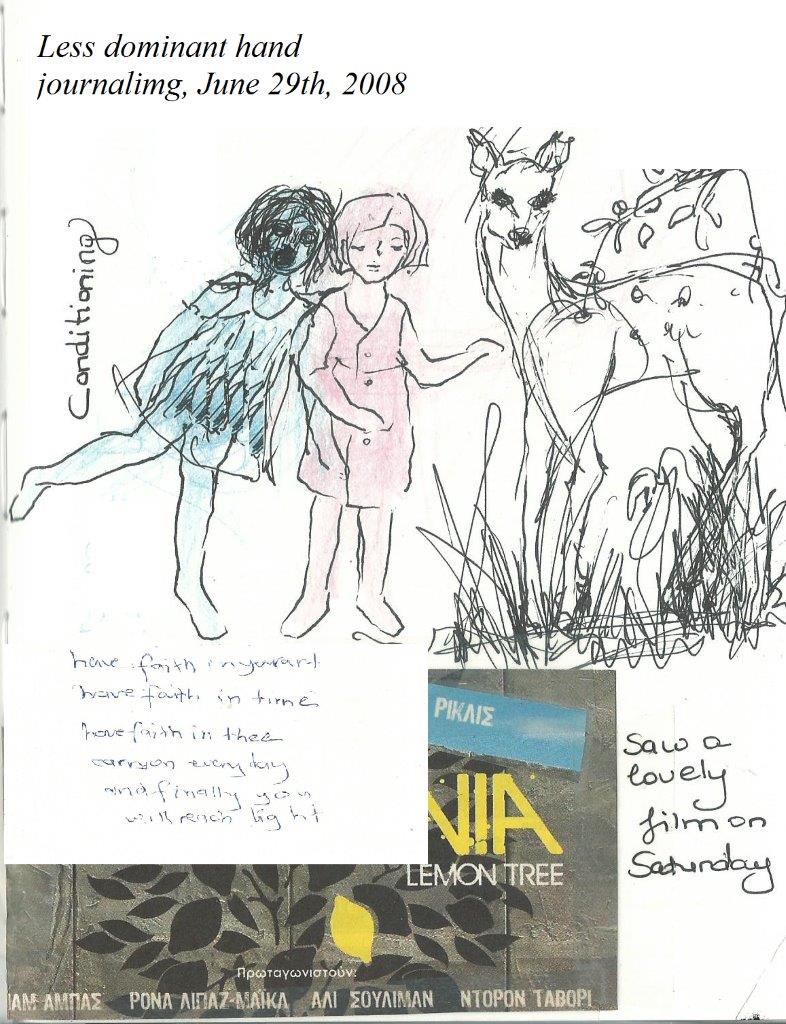Synchronicities
I returned to journaling in 2005 as part of my intention to explore and process trauma. At the time I also read articles and chapters in various books on the power of journaling as both a therapeutic tool, but also a means of self knowing. I engaged in a variety of exercises, used free-association, wrote with the less dominant hand and also sketched. I wrote from a child and adult point of view. One exercise I sometimes did was to first write from a certain younger age perspective and then write a letter to that younger state from the adult perspective as a form of reparenting, soothing and integrating experience. Currently there are many more books on the benefits of writing and more research to support the benefits and effectiveness of this process. There are hundreds of guided writing exercises and activities available. Also, journaling or writing complement yoga, meditation / mindfulness practices, and so on. It is really good to see that more and more people not only engage and consider writing and journaling important, but also see its value as a therapeutic tool, because not that long ago in a Master’s Programme in Clinical Psychology I was doing, these processes and ideas were seriously frowned upon, but this story could be the theme of another post.

These last few weeks I have been looking at some old journals from a somewhat different perspective. Stories and adaptations, the whole curriculum of conditioning, injunctions and psychological defenses, the layered nature of experience and understanding, emotions and intentions, the gaps in the stories or the lack of data, all populate these pages. Yesterday, I listened to Elena Brower talk about Practice You, a workbook she has created based on her own experience. She includes a letter writing exercise in each chapter and talks about how this process was illuminatibng for her. Specifically, she invites readers to write a letter to themselves at a certain age. For instance, in one of her book chapters she asks readers to:
“Consider a moment when you felt challenged, afraid, or sad at the age of nine. See yourself hugging that child you were. Now, from your perspective today, write a song, a poem, a letter, or a story that gives that child insight into the ways in which you will soon learn to know yourself, believe in yourself, and to bestow dignity upon yourself by trusting yourself.” (Sounds True: Insights at the Edge)
So, in some sense through this process we acknowledge and validate the pain or confusion or fear, but we also reassure that young part that things will turn out fine. To say this differently, we can potentially, unfreeze and defuse landmines of fear, injunctions and unhealthy learning, reframe experience, increase continuity and integration, release outdated beliefs, broaden perspective and understanding of traumas or events, modulate emotions and practise self-compassion. It’s like going back in time and shedding light on events and emotional experiences, and also, paying our respects to the young parts that have held this difficult material. Elena Brower says ‘you can handle that person, you can heal that person, and you can help that person bring forth into right this moment more solace and more confidence’ and that it’s like going back and holding that person’s hand.
